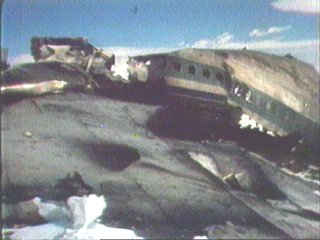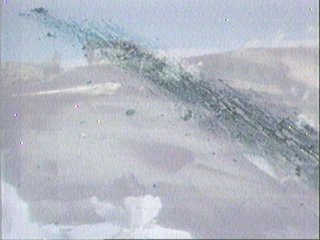![]()
Coasts
Rivers/Lakes
Lowlands/Plains
Geysers/Mud
Glaciers
Mt. Ruapehu
Mt. Cook
White Island
A Maori Legend
![]()
Abbotsford
Aramoana
Ballantynes
Brynderwyns
Cave Creek
Hawkes Bay
H.M.S. Orpheus
Influenza
Mt. Erebus
Mt. Tarawera
Rainbow Warrior
Seacliff Hospital
Tangiwai
Wahine
![]()
Annie Aves
Ata-hoe
Daisy Basham
Jean Batten
Minnie Dean
Mabel Howard
Margaret Mahy
Kath Mansfield
Kate Sheppard
Kiri Te Kanawa
Catherine Tizard
Murray Ball
Charles Goldie
Edmund Hillary
Richard Pearse
Lord Rutherford
Charles Upham
![]()
NZ FAQ--Funny
NZ Links
Credits
November 28th, 1979 The worst air disaster in Antarctica, and the worst for Air New Zealand, was the crash of DC-10 Flight 901 into 3,794 metre high Mt. Erebus with the loss of all 257 lives. The aircraft was on a sightseeing flight from New Zealand to Antarctica. It was a day trip, normally taking around 11 hours, and those on board were excited at the prospect of seeing one of the last untamed areas in the world. This was a very special flight as it celebrated the fiftieth aniversary of Rear-Admiral Byrd's first flight to Antarctica. On the flight deck was an experienced crew. Captain Jim Collins had been with Air New Zealand for 21 years. First Officer Jim Cassin, and the two flight engineers on board, Gordon Brooks and Nicholas Maloney knew every inch of the flight deck of the DC-10. None had any concerns about the trip which was comparatively straight forward. Nineteen days prior to the flight an Antarctic briefing session had shown both pilots printouts of the flight plan used by previous flights. The plan included a list of co-ordinates from Auckland to McMurdo and home again. When plotted on a map they took the aircraft on a course down the centre of low-lying McMurdo Sound. On the morning of the trip neither man could be expected to notice that amongst the screed of figures they were handed two digits had been changed. This change would alter the aircraft's course by 45 kilometres to the east taking it directly towards the active volcano of Mt. Erebus. These were paying customers and, to give them the ultimate delight, aircraft taking scenic tours often dropped to very low altitudes. The last transmission from the DC-10 to Mac Centre, (the United States Air Force communications base at McMurdo), had the aircraft dropping to 610 metres (2,000 feet). Had the plane been following the original flight plan this would have caused no strife, the area was all low ground.
But flight 901 was not where the crew thought it was. At 12.49 p.m. and 44 seconds the ground proximity warning device screamed its warning: GPWS: Whoop,
whoop. Pull up. Whoop whoop. [Tape Ends] Ten seconds before 12.50 p.m. (NZ daylight time) the aircraft shattered on the slopes of Mt. Erebus. Due to white out conditions the crew were unable to see the huge mountain directly ahead and by the time the DC10's ground proximity warning system told them they were in trouble it was too late for any recovery. Back in New Zealand fears mounted for the safety of the aircraft as time continued to pass without word. At 10 p.m., about half an hour after the last drop of fuel on the aircraft would have been used, reporters were told, "It is with great regret that we must accept the aircraft is lost. It is assumed that (it) must be down...There is very real concern at this stage." Later, a Hercules searching for any sight of the aircraft located the smudge mark on the side of Mt. Erebus. It reported that there were no signs of survivors. All 237 passengers and 20 crew were dead. 213 people were recovered and identified. The remaining 44 victims were buried in a mass grave containing 16 coffins. A Commission of Inquiry was called. It was headed by a High Court judge from Auckland, Mr. Justice Mahon. When his report was released it pulled no punches. Whereas Air New Zealand had constantly tried to put forward a theory of pilot error Mr. Justice Mahon stated, "the single dominant and effective cause of the disaster was the mistake made by those airline officials who programmed the aircraft to fly directly at Mount Erebus and omitted to tell the air crew'. Later inquiries found additional evidence to possibly discredit these claims. Nevertheless, the fact remains that Captain Collins was never informed of the change to his flight plan which put Mt. Erebus directly in the path of his aircraft. Not only that, but Air New Zealand failed to notify McMurdo air traffic control of the modifications and there is strong suspicion that this was because the United States ATC would have lodged a very strong objection to the new flight path. Reasons for the 11th hour change remain unclear, however this may have had something to do with a decision in 1978 to computerise all flight plans. Just prior to the crash the aircraft was on computer flight.
|



